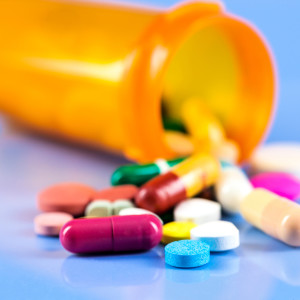Despite the constant stream of dour news about drug prices, actions by employer-sponsored plans are providing reasons for hope.
Instead of accepting the high-cost of originator biologics, companies as diverse as Disney, Costco, and CalPERS are “asserting their own desire to see biosimilars implemented among their employees.” Capturing these savings during the pandemic only increases their importance.
Biologic medicines are high valued drugs that have meaningfully improved patient health, particularly for people living with cancer and auto-immune diseases. These medicines are also expensive and one of the primary drivers of the drug affordability problem. Biosimilars are lower-cost competitors to the originator biologics and they meaningfully reduce costs.
Biosimilars save patients, insurers, and other payers money because they cost between 28.9 percent and 58.6 percent less. The competitive pressures created by biosimilars also drive down the prices of originator biologics.
After years of slow growth in market share, a robust market for biosimilars is beginning to emerge. Biosimilars’ market share was nonexistent for most biologic drug classes back in 2018, but has increased substantially since and now equals about 30 percent. The combination of lower-prices and a growing share of the market is leading to significant healthcare savings.
According to the asset management and research firm AllianceBernstein, biosimilars generated an annualized $6.5 billion in savings during the second quarter of 2020. Based on the most recent price and volume data, as well as Pacific Research Institute research from 2019, the total US biosimilars savings for all of 2020 were approximately $4.9 billion.
However, the potential savings could be more than $11.2 billion should biosimilars obtain a share of the U.S. market equivalent to their market share in Europe, or a share equivalent to that of generics in the U.S. small molecules market.
Realizing this potential will significantly improve drug affordability in the United States. And, by demanding greater use of lower-priced biosimilars, employer-sponsored plans are helping biosimilars reach this potential.
For instance, one of the larger disincentives that is preventing greater adoption of biosimilars is the “fail-first” policy imposed by many payers.
A fail-first policy prevents doctors from prescribing a cheaper biosimilar medicine unless the patient first fails on the more expensive originator biologic. This, however, makes no sense. The purpose of fail-first policies is to encourage patients to use a less expensive medicine first. Only then, if the less-expensive medicine fails to adequately address their symptoms, can the more expensive medicine be prescribed. With respect to biologics, the logic is backward. The result is a large disincentive to biosimilar use.
These employer-sponsored plans are removing this disincentive. Instead of requiring patients to first fail on the more expensive biologic, these plans are pushing for the lower cost, but just as efficacious, biosimilar medicines to be the favored drug.
While an important step, other reforms are necessary to help biosimilars reach their full potential. Paramount among these is the problem of rebate walls. Rebate wall tactics works like this: Blockbuster drugs have exceptionally large sales volumes and subsequently offer payers exceptionally large concessions. However, these concessions are predicated on meeting volume targets. If these targets are not met, payers lose all of the concessions. This imposes large potential costs on payers that dwarf the per-unit savings created by biosimilars.
The potential loss of these rebates encourages payers and pharmacy benefit managers (PBMs) to either discourage the use of competitive biosimilar medicines (through policies such as fail-first) or block biosimilars from the drug formulary entirely. The rebate wall strategy not only creates unnecessary obstacles that deny patients access to lower-cost biosimilar medicines, but also raises systemic health care costs and patient out-of-pocket costs. Patient costs are based on the inflated list prices and are not reduced by the concessions that insurers and PBMs receive.
Policy reforms that eliminate market disincentives, when coupled with employer-sponsored plans prioritizing the use of lower-cost medicines, will help biosimilars reach their full savings potential. An improved competitive environment will lead to an efficient balance between improving affordability and growing innovation. The result would be a high-quality, affordable health care system that better serves patients. Consequently, addressing these obstructions should be a top priority.

